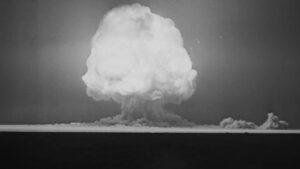“Unraveling the Mystery: Why Italy Escaped a Post-War Reckoning for Its Atrocities”
So ⦠many crimes were committed. The Allies knew about many of them. So why didnât the World witness the equivalent of Nuremberg and Tokyo, a large trial bringing to attention and documenting for posterity the scale of those atrocities?
As ever, nothing is black and white and the devil is in the details.
The Armistice
Letâs start with the Italian armistice of September 8, 1943. With this act, the Italian government surrendered to the Allies, and continued the war against the Axis as a âco-belligerentâ army alongside Britain, the US, and other allied forces.
As to what all went into this so-called switching of sides, this whole affair would deserve a video of its own. But in brief for now, following Operation Husky, the Allied landings in Sicily, on July 9, 1943, dissent against Mussolini grew exponentially within the armed forces, the Government and the Fascist Party itself. On July 25, during a session of the Fascist Grand Council, party official Dino Grandi launched a motion for Mussolini to be removed, and for full powers to be handed over to King Victor Emmanuel III of Savoy. The motion gained a majority within the Grand Council, prompting the King to seize the occasion and arrest the Duce.
In the aftermath, Victor Emmanuel appointed Field Marshal Badoglio as his new Prime Minister. Keep this in mind: Badoglio himself could be held accountable for his fair share of war crimes as Grazianiâs former superior in the Italo-Ethiopian war. He could also be held accountable for crimes against peace, considering his role as Chief of Staff of the armed forces when Italy declared war on France and Britain.











